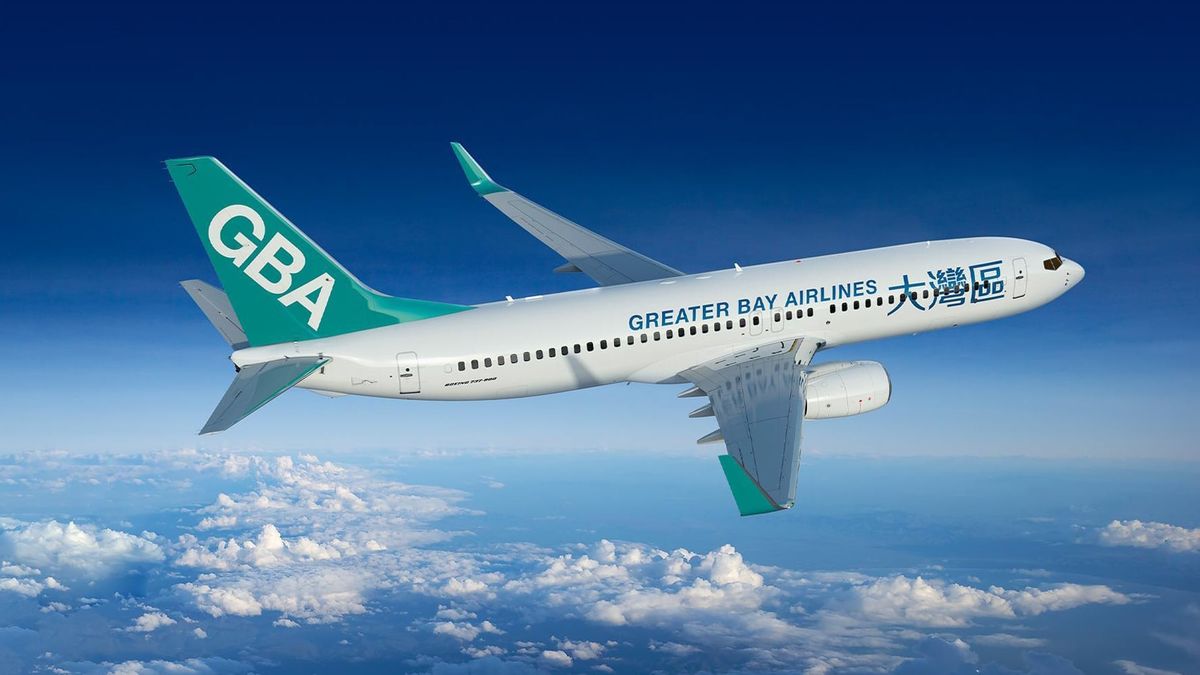What you need to know about Hong Kong’s new Greater Bay Airlines
The cashed-up carrier will challenge Cathay Pacific on over 100 key Asian routes.

Backed by a Chinese tycoon with ties to Beijing, Greater Bay Airlines is trying to muscle into the Hong Kong turf of stalwart Cathay Pacific.
Founded by property magnate Bill Wong, Greater Bay Airlines has ambitions to fly to 104 destinations in mainland China along with Taiwan, Japan, South Korea, Thailand and other “destinations in the Asia Pacific region”.
While there are no confirmed launch dates for any flights, Greater Bay Airlines has three Boeing 737-800 jets on lease according to its website “plans to have seven Boeing 737-800 aircraft in service by 2022 and more than 30 by 2026”.
CEO Algernon Yau says Greater Bay Airlines will be a “value carrier,” somewhere between a budget airline and a full-service one.
Planes won’t have seat-back televisions and customers will be encouraged to use an app to ‘customise’ their journey before boarding, including ordering anything from fast food to premium whiskey to be served in-flight.
In a statement Greater Bay said that it would “adopt the business model which offers great attractive fares, flexibility and choice for customers which empower customers to choose and enjoy for what they want and afford to pay.”
“We are excited to bring a new airline choice to customers, at a time when travellers are yearning for the opportunity to fly again soon,” says Yau, an ex-Cathay executive who for a period ran the airline’s now defunct Cathay Dragon unit.
“GBA is committed to contributing to the continual aviation development of Hong Kong and the Greater Bay Area. The airline industry helps generate trade, promote tourism, and create more employment opportunities for Hong Kong people.”
Starting fresh
Starting an airline at the tail end of a pandemic that’s decimated travel worldwide may sound unwise.
But 62-year-old Wong, dubbed the Li Ka-shing of Shenzhen for his expansive business empire across the border, isn’t a total novice.
He already owns one carrier, Shenzhen-headquartered Donghai Airlines, which services a raft of Chinese cities as well as a few regional routes.
Greater Bay Airlines’ entry into Hong Kong also comes at a low point for Cathay, the iconic carrier controlled by conglomerate Swire Pacific, whose parent is U.K.-based private family group John Swire & Sons.
Even before Covid, Cathay was impacted by its association with the 2019 pro-democracy protests in the former British colony, forcing a change in management.
Hong Kong is sticking to a Covid Zero strategy, so Cathay can only watch on as carriers in neighbouring countries ramp up international routes.
With no domestic market and mainland China’s borders still closed even to Hong Kong, Cathay’s passenger traffic languishes at about 2% of pre-pandemic levels.
“We’re starting from new, so we don’t have the burden or the baggage,” CEO Yau said, suggesting that Covid has levelled the playing field.
Greater Bay Airlines can be more agile and flexible than a legacy carrier like Cathay, he said. It also has a ready-made traveling public on its doorstep, considering the Greater Bay Area covers Hong Kong, Macau and municipalities in Guangdong province with a population north of 86 million.
“Now we’re all starting from the same line,” Yau said from an interview at his office overlooking a hazy Hong Kong Airport and its new third runway. “When business comes back, we can easily catch up and not be left behind.”
Cathay, which is almost 30% owned by state-controlled Air China, seems unperturbed by the potential for more competition.
“There’s a wealth of potential for both business and leisure travel as the region continues to develop,” a spokesperson said.
Good timing, or bad?
Hong Kong Airlines is the city’s only other commercial passenger airline that doesn’t belong to the Cathay group. It’s been limping along since its parent, Chinese conglomerate HNA Group, buckled under a pile of debt at the start of the pandemic.
Greater Bay Airlines is also unable to generate any cash at present because it can’t sell tickets.
Wong said over a year ago that he expected to spend around HK$2 billion (USD$257 million) before obtaining regulatory approvals. Other details surrounding the airline’s financing are scant and Yau didn’t elaborate.
“Investing in an airline is a very costly exercise,” said Yau. “Our investor Mr Wong is a land developer in Shenzhen, so he has very strong financial support to this airline.”
There’s also the question mark over Hong Kong’s future as an international aviation hub if the city’s strict quarantine measures don’t change.
Despite the difficulties of the pandemic and Hong Kong’s Covid Zero approach, Greater Bay Airlines could benefit from its timing, with cheaper aircraft, less congested landing slots and plenty of available pilots, according to Brendan Sobie, Singapore-based consultant at Sobie Aviation.
Another factor going in Wong’s favour is his ties to the mainland. The businessman is a member of China’s key political advisory body, the Chinese People’s Political Consultative Conference. Yau has noted that Hong Kong-Beijing would be a fitting first route.
“Greater Bay Airlines will probably be looked at by the regulators relatively favourably,” said Richard Harris, founder and CEO of Hong Kong-based Port Shelter Investment Management. “Cathay is partly owned by British interests, partly by a Chinese airline and partly by Qatar. But what it isn’t, it’s not linked to China as much.”
Most pilots and cabin crew are Hong Kong citizens who used to work for Cathay, Dragon or Hong Kong Airlines, Yau said. “We’re quite aggressive with our plan.”